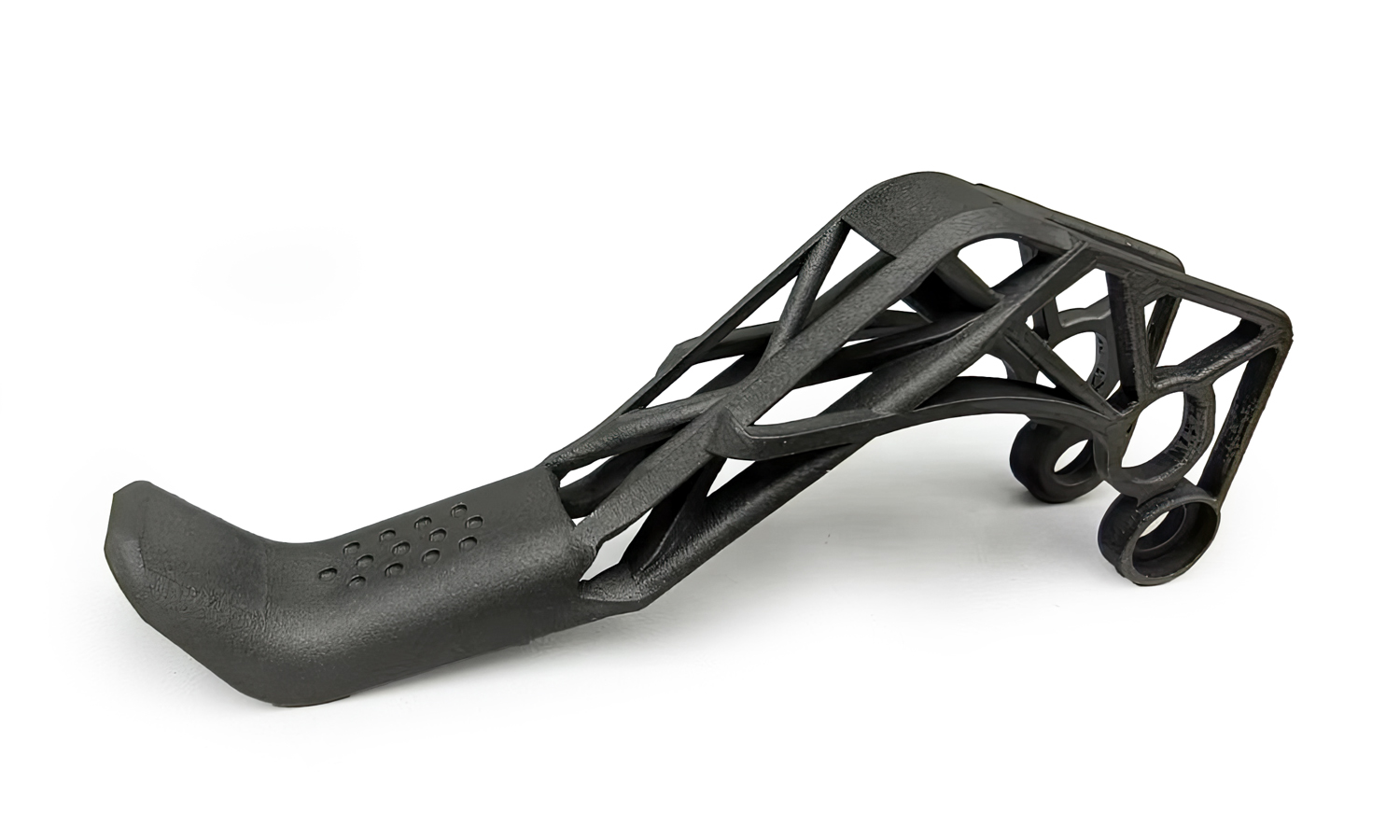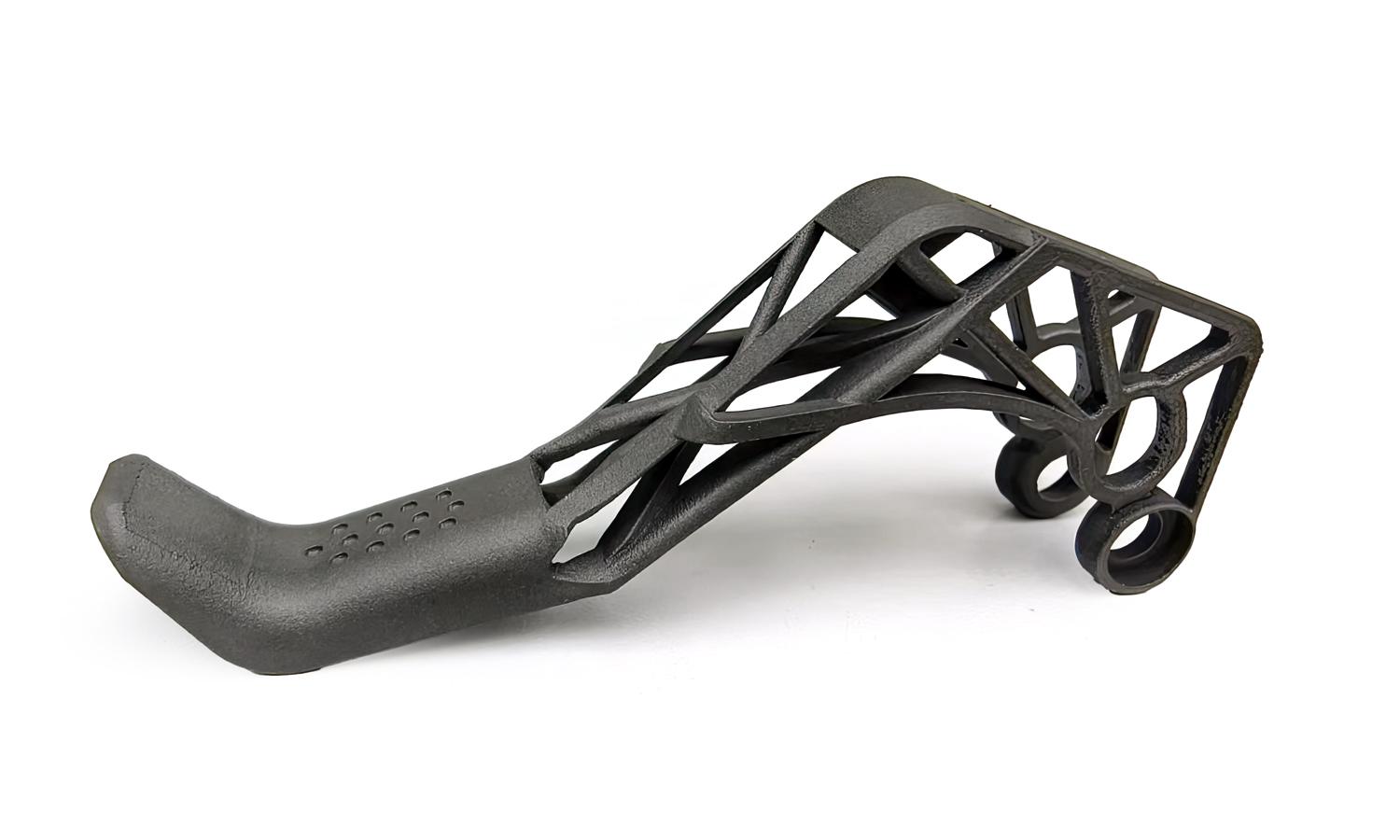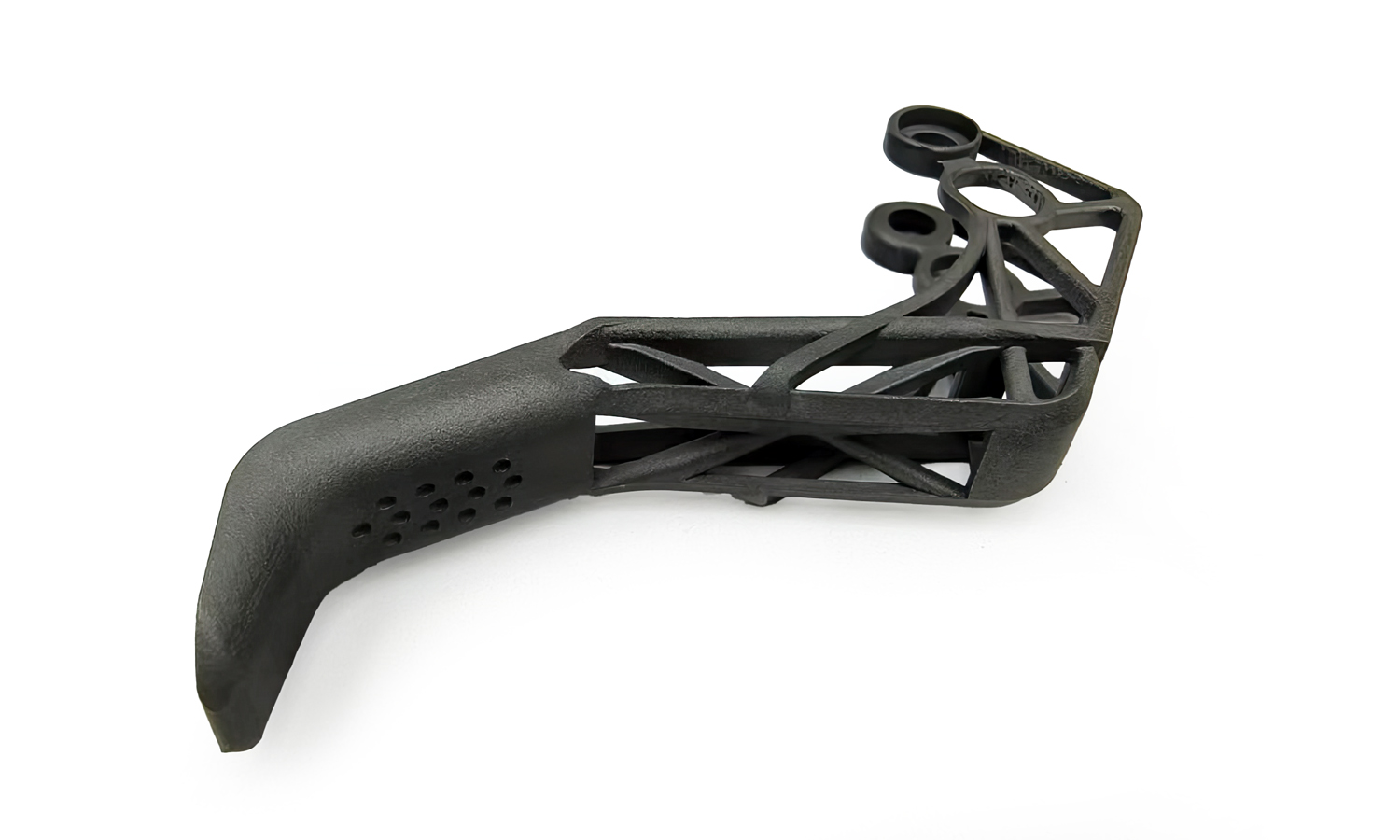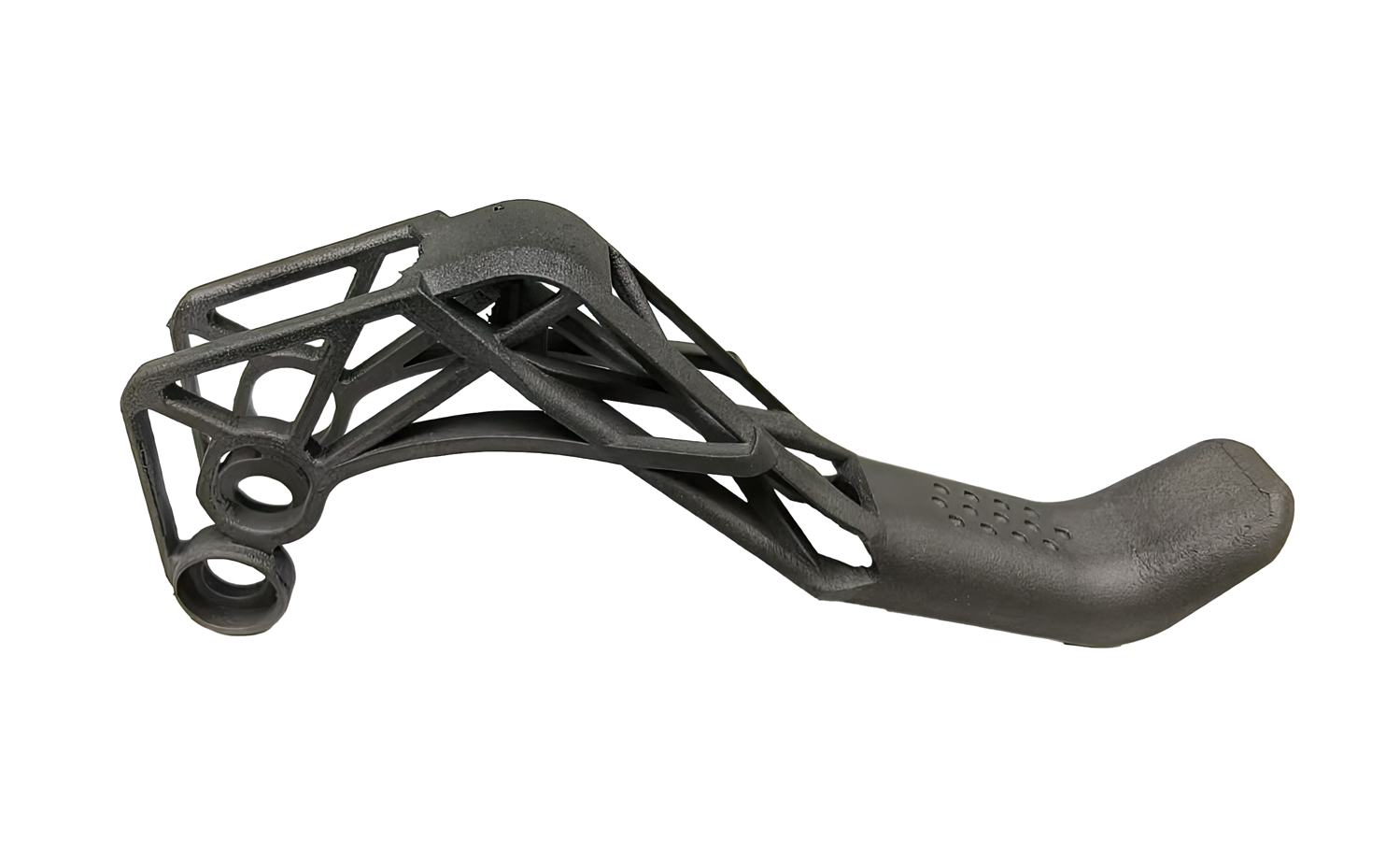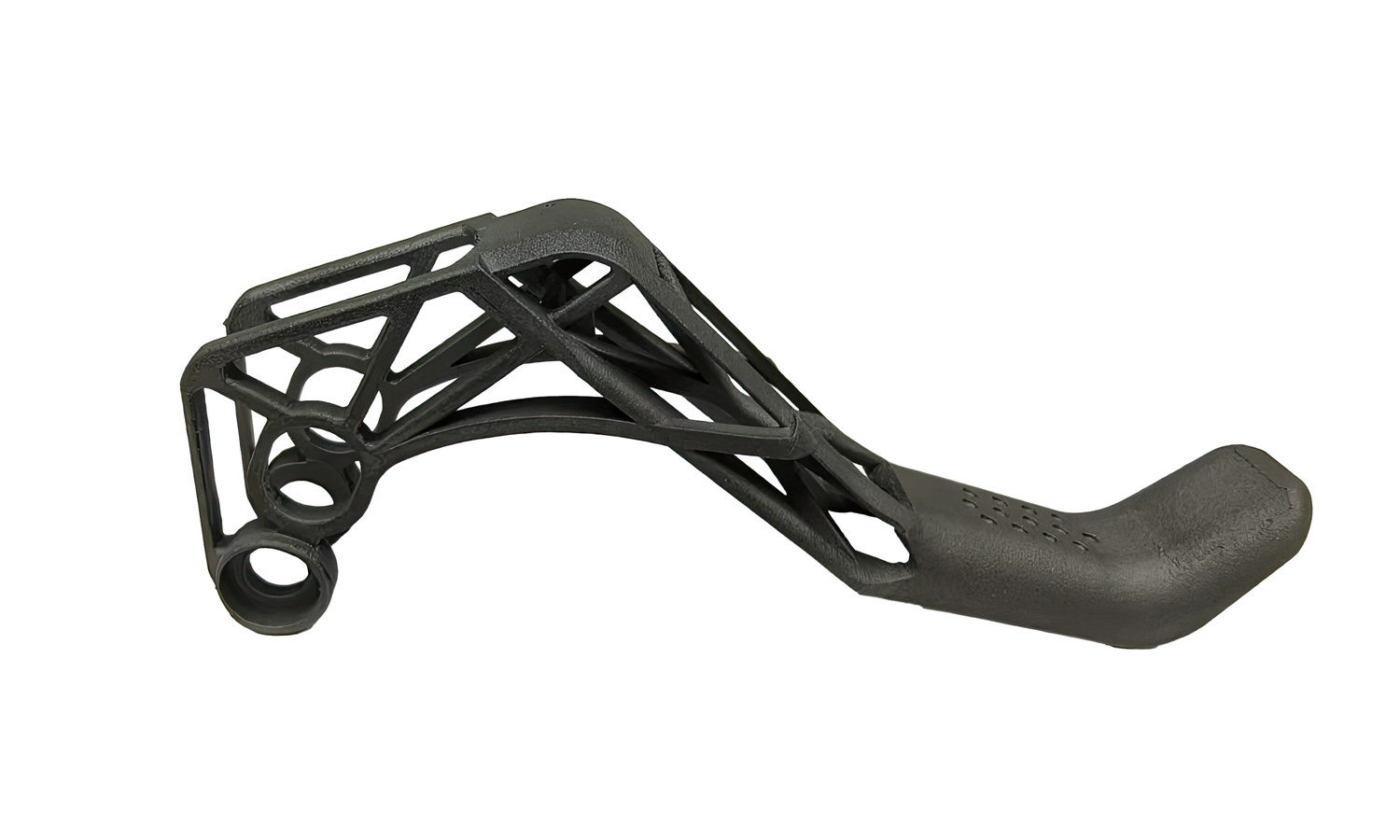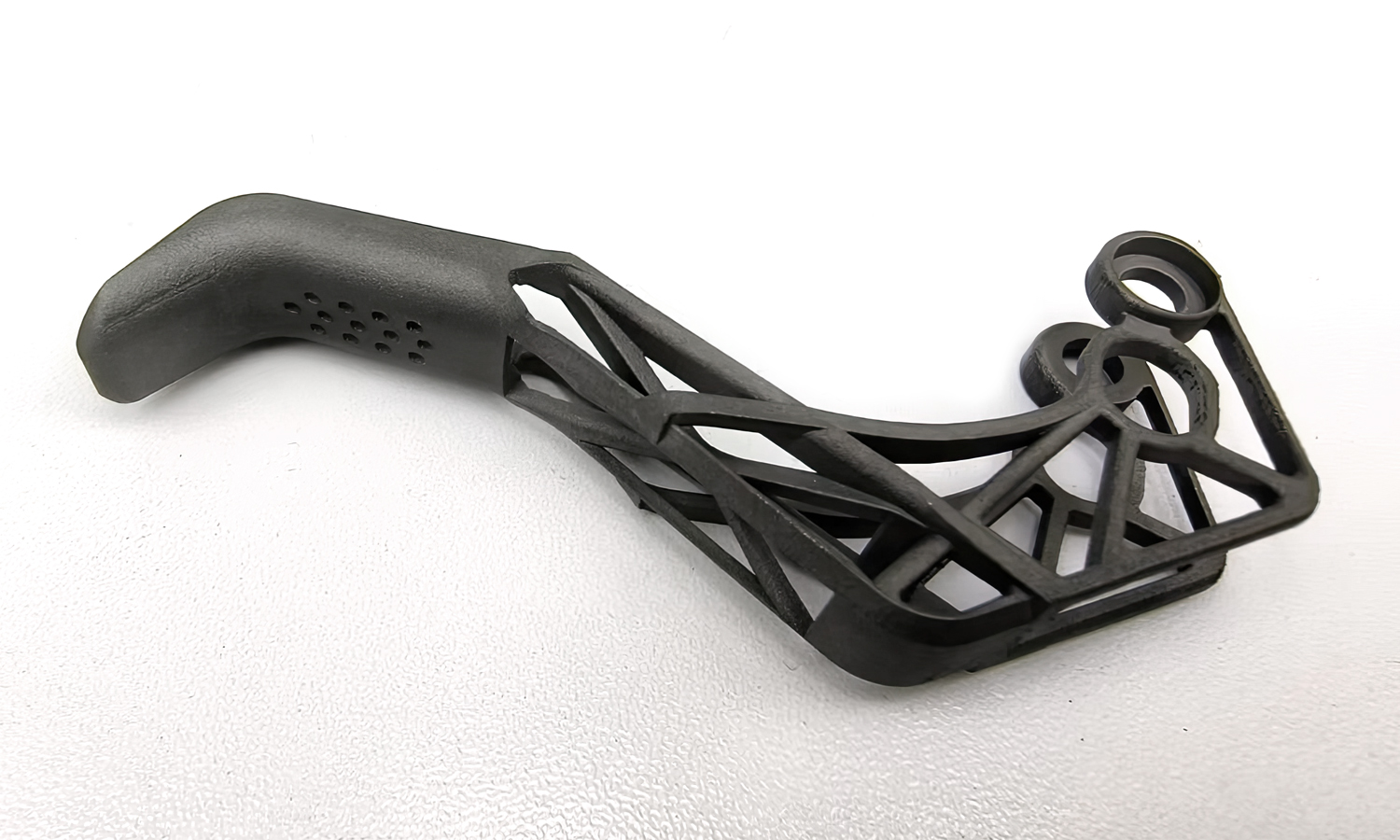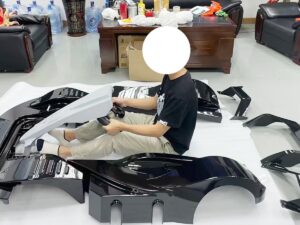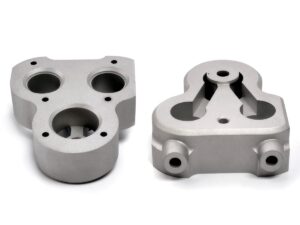- SLA 3D Printed Scalloped Edges Retro-style Tableware
- ColorJet 3D Printed Aerugo Color Lion Miniatures
Gallery
About Project
This innovative bicycle hand brake prototype is pushing the boundaries of cycling technology. Crafted using DMLS (Direct Metal Laser Sintering), a type of 3D printing, the brake lever boasts an intricate lattice structure on the upper portion. This design choice is likely twofold:
- Strength: The lattice structure provides exceptional strength, ensuring the brake lever can withstand the demands of cycling.
- Weight Reduction: By utilizing a lattice instead of solid material, the designers have significantly reduced the weight of the brake lever without compromising its integrity. This translates to a lighter overall bike frame, enhancing performance.
The handle section of the brake lever is purposefully designed for optimal rider comfort and control. A solid construction ensures a secure grip, while the textured surface prevents slippage even in wet conditions.
This 3D-printed titanium alloy brake lever prototype showcases the immense potential of additive manufacturing in the cycling industry. By combining lightweight materials with innovative design, manufacturers can create high-performance components that elevate the rider’s experience.
Ready to push the limits of design and functionality with 3D printing? FacFox is your one-stop shop for exceptional 3D printing services. We offer cutting-edge DMLS technology, a wide range of materials like titanium alloy, and a team of experts to bring your ideas to life. Contact FacFox today and see how 3D printing can revolutionize your next cycling project.
Solution
- Step 1: Designing.┬ĀInitially, a detailed 3D model of the bicycle hand brake was created using computer-aided design (CAD) software.┬ĀThe model included an intricate lattice structure on the upper part of the brake lever and a solid handle with a textured surface.
- Step 2: Slicing.┬ĀThe CAD model was then sliced into thin horizontal layers, converting it into a file format suitable for the DMLS printer.
- Step 3: Printing Preparation.┬ĀA bed of titanium alloy powder was prepared in the DMLS machine, and the printing parameters were set according to the requirements of the prototype.
- Step 4: Layering.┬ĀThe DMLS printer spread a thin layer of titanium powder onto the build platform.
- Step 5: Sintering.┬ĀA high-powered laser selectively sintered the first layer of powder, fusing the titanium particles together to form a solid layer.
- Step 6: Adding Layers.┬ĀThe build platform was lowered, and a new layer of powder was applied over the sintered layer.┬ĀThis process was repeated, with each layer being sintered on top of the previous one, building the brake lever layer by layer.
- Step 7: Cooling.┬ĀAfter the final layer was sintered, the build chamber was allowed to cool down gradually to ensure the structural integrity of the brake lever.
- Step 8: Removal.┬ĀThe excess powder was removed, revealing the completed brake lever.┬ĀThe intricate lattice structure and the solid handle with the textured surface were clearly defined.
- Step 9: Post-Processing.┬ĀThe brake lever underwent various post-processing steps, including heat treatment to relieve residual stresses and improve mechanical properties.
- Step 10: Finishing.┬ĀFinally, the brake lever was subjected to surface finishing techniques to achieve the desired surface texture and to enhance the grip of the handle.
